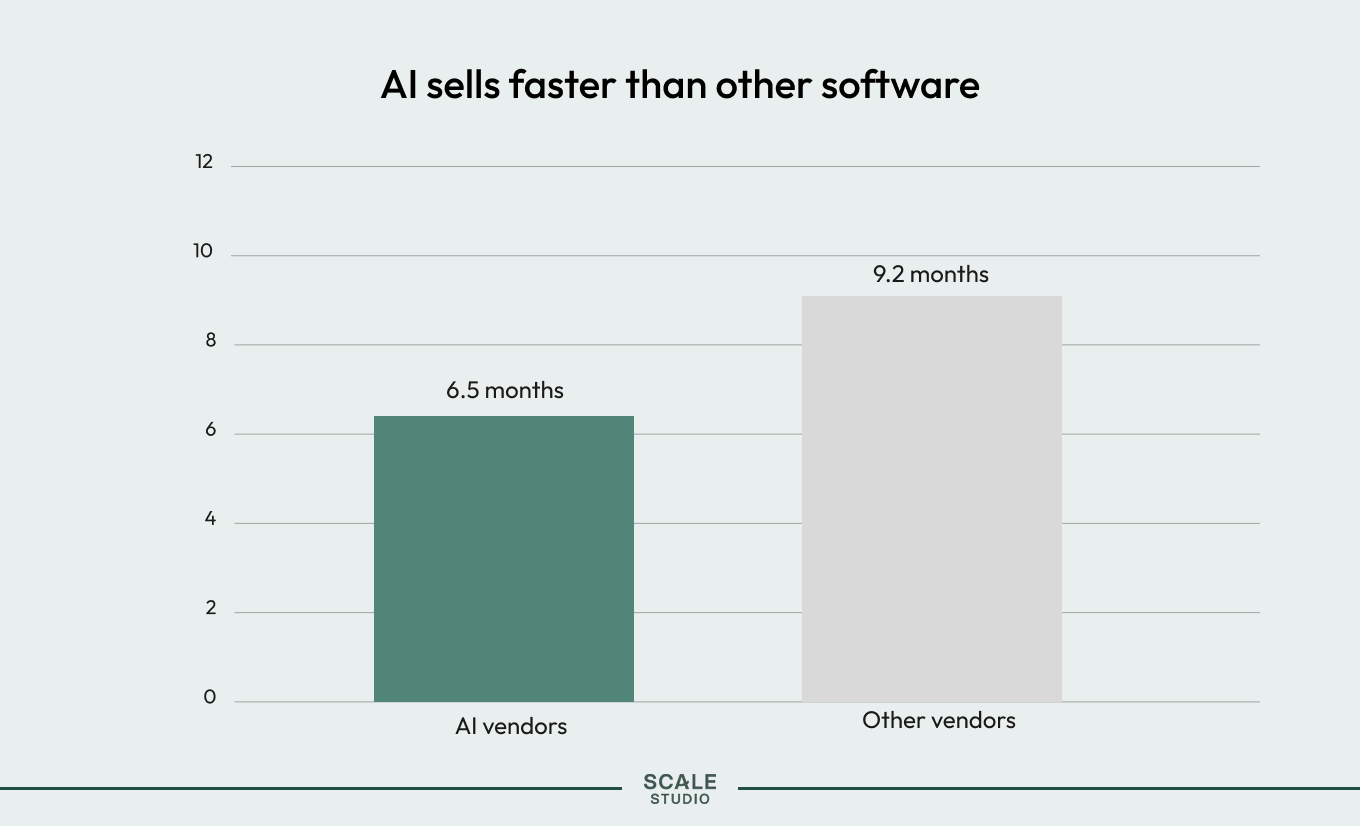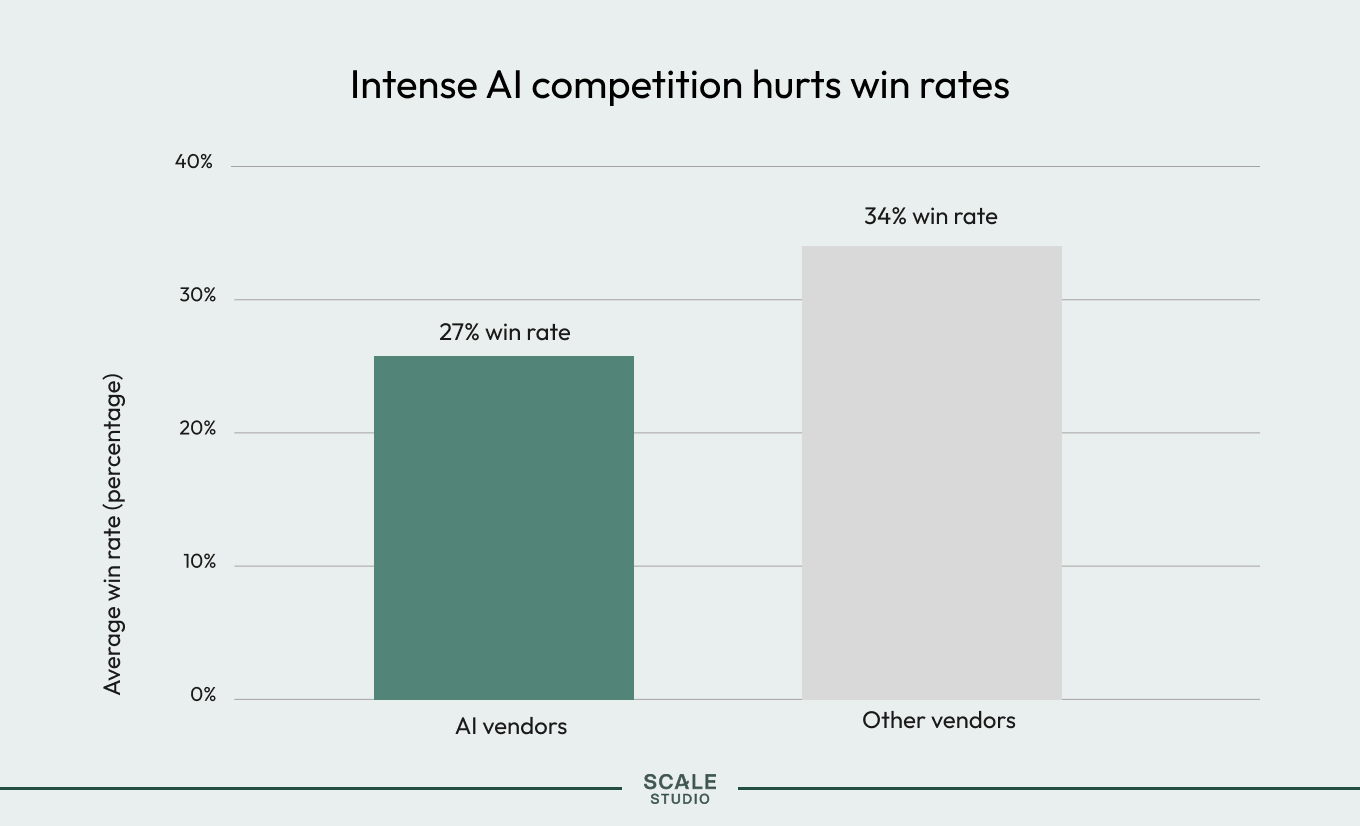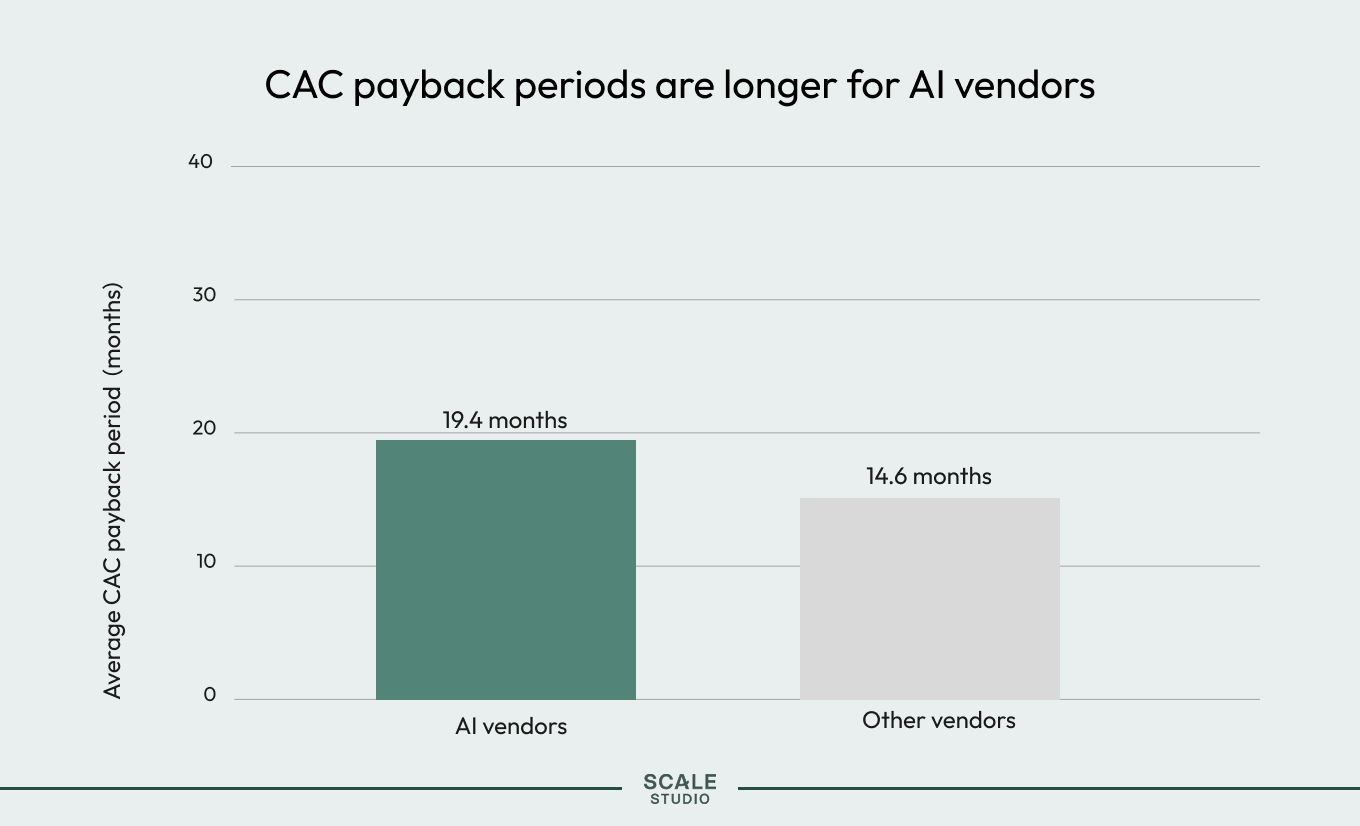To date, much of the chatter about AI in GTM has focused on changes to how we sell: how we can now use AI SDRs, AI autodialers, AI content generation platforms, etc. And while these discussions are critical to keeping pace in a fast-changing landscape, folks often fail to pay similar attention to the changes the AI revolution has brought to what we’re selling. In our view, the shift from selling traditional software to selling AI is hugely consequential, and requires just as profound a change in GTM strategy as the new, AI-flavored GTM tech stack.
In our recent Scale GTM benchmark survey, conducted in partnership with our friends at Benchmarkit and GTMfund, we looked at core GTM metrics across two groups of respondents: companies selling AI products (including legacy SaaS products that have incorporated AI in a meaningful way), and companies selling everything else. While it was no real shock to us to learn that these two groups show meaningfully different performance across various metrics, we were surprised to see that selling AI had a positive impact on performance in some areas and a negative impact in others.
AI is not a silver bullet. In fact, selling AI doesn’t mean you grow any faster at all (except if you’re in the top decile of startups). Selling AI means faster sales cycles, but you pay for that with lower win rates and longer payback periods. This is what we’re calling AI’s double-edged sword, and it has major implications for your GTM strategy as you (re)position your team to sell AI.
[Data note: The compositions of these two samples–AI vendors and non-AI vendors–are similar with respect to all firmographic variables we tested, including employee count, ACV, ARR, solution type, primary customer target segment, and primary pricing model.]
AI sells faster than other software

As executives continue to push for faster AI adoption across their workforce, businesses are scrambling to incorporate AI into their tech stacks. The result of this is that AI vendors are selling their products almost 50% faster than vendors of other solutions, with average sales cycles a full quarter shorter than those of their non-AI counterparts.
This is the positive side of being an AI vendor: you have a built-in advantage based not only on the capabilities your product offers, but also on the fact that everyone is trying to expedite the adoption of tools like yours. You are less likely to get hung up in lengthy POCs, stakeholder alignment exercises, negotiations, or procurement processes.
Intense AI competition hurts win rates

Unfortunately, the fact that everyone is rushing to buy has not escaped your competitors’ notice, and every category is crowded with AI opportunists. (As Sydney Sloan shared at our GTM Summit in April, G2 now tracks four thousand AI products, up 66% year-over-year.) Additionally, because many AI products today are still in their infancy–and, as a result, not substantially different from others in their category–competitive differentiation is hard to establish.
As a result, though the deals you win close quickly, winning deals overall is harder. In general, AI vendors have an average win rate about 20% (7 ppt.) lower than those of their non-AI peers. This is the first drawback of selling AI.
CAC payback periods are longer for AI vendors

The other downside is the (much) longer CAC payback periods. In our data, AI vendors’ payback periods are almost five months longer than those of other vendors, a trend we attribute to (at least) three factors.
First, there’s the fierce competition we discussed above. If you’re an AI vendor, your deals are more competitive and you have to price your product more aggressively to win. Second, the costs of running AI software are much higher than the costs of traditional software, lowering your total gross margin per customer. Third, you’re much more likely to price using a usage- or outcome-based scheme than a traditional software vendor. If so, your customers won’t be paying you for a full block of seats on Day 1; they’ll pay you for exactly what they use and nothing more. Together, some combination of these factors means that it takes longer for you to recoup the money you spend to acquire customers.
Strategic implications
Selling AI has pros and cons. On the pro side, you benefit from much shorter sales cycles. On the con side, you face lower win rates and longer CAC payback periods. Taken together, these facts suggest three strategic recommendations for AI vendors:
- Maintaining strict ICP discipline is especially crucial. Of course, every company benefits from a tightly focused GTM, but if you’re an AI vendor, you can’t afford to lack one. The best way to raise flagging win rates is to ensure your resources are deployed against the accounts that place differential value on your solution.
- Your competitive differentiation has to be crystal clear. Most AI vendors do a good job explaining why their product is better than the existing non-AI-powered process, but few do a good job differentiating themselves from their AI peers. Doing so is the key to not only raising your win rates, but also to avoiding the sort of pricing pressure that leads to prolonged CAC payback periods.
- You have to sell the value, not the tech. As Marc Wendling (Glean) remarked at our GTM Summit in April, many AI vendors can effectively communicate the revolutionary nature of their technology; few, however, can precisely articulate their value proposition, the problems they solve, and the ROI they generate. This state of affairs may not have been a problem early on–when some buyers were so eager to adopt AI that they loosened their proof-of-value requirements–but it won’t fly going forward. To win more deals, even with gung ho AI enthusiasts, you’ll need strong value selling.
This is by no means an exhaustive list of the changes GTM teams must make as they transition from selling traditional software to selling AI (for more on this topic, see the recordings from our GTM Summit.) Rather, these are a few shifts suggested by the data we’ve seen thus far. The important point is this: selling AI requires new thinking around targeting, marketing, and sales, and running the traditional GTM playbook is a recipe for failure.